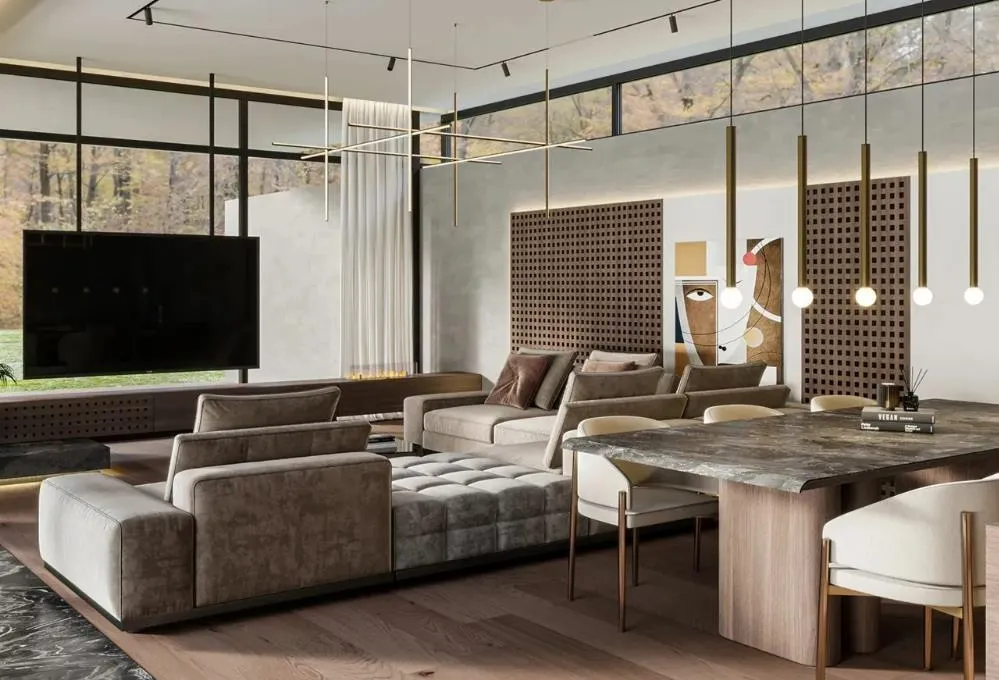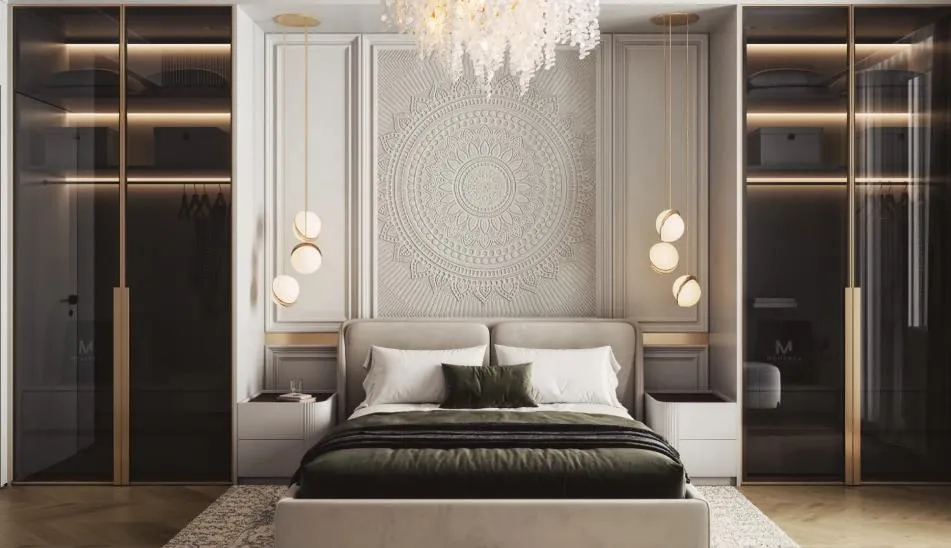The Complete Guide to Basement Flooring Design Ideas
As residential space utilization increases, more and more families are beginning to pay attention to the renovation and decoration of their basements. Among them, basement floor tile design ideas, as the first step in renovation, directly affect the comfort, beauty and practicality of the space. So in the actual design process, what key points should we pay attention to? What are the materials for the floor and what popular floor design styles are currently available? This article will analyze them for you one by one.Next, we will start from the inexpensive basement floor design ideas.
What aspects should be considered in basement floor design?
In addition to considering price, we also need to consider the following key points,When designing a basement tile floor, you need to consider the following aspects to ensure the durability and comfort of the floor :
1. Moisture Resistance
Basements are usually high in humidity, so it is important to choose flooring materials with good moisture resistance. For example, materials such as luxury vinyl tile (LVT), ceramic tile, and engineered wood have good moisture resistance and are suitable for basements.
2. Durability
Basements may be used as multi-functional rooms such as gyms, recreation rooms, or storage rooms, so the flooring needs to have strong wear resistance and load-bearing capacity. Materials such as epoxy resin, concrete, ceramic tile, and LVT are durable choices.
3. Comfort
Basements are usually cooler all year round, so the flooring should have good insulation performance. You can consider adding a floor heating system or choosing a laminate flooring with an insulation layer.
4. Cost-effectiveness
When considering the cost of basement tile flooring, it is important to determine your budget and the size of the room. Flooring materials such as LVT, ceramic tile, and concrete are cost-effective choices.
5. Unified beauty and style
The floor is not only a functional carrier, but also an important part of the overall space beauty. The stylized design should be combined with the functional use of the basement, which is also cheap ideas for basement flooring.
Common basement floor materials and their characteristics
1. Luxury vinyl tile (LVT)
LVT is waterproof, moisture-proof, wear-resistant, and has a variety of appearances. It can imitate natural materials such as wood and stone, making it suitable for basements.
2. Engineered wood flooring
Engineered wood flooring is composed of multiple layers of materials, has good stability, is not easy to deform, and is suitable for basement environments with variable temperature and humidity.
3. Ceramic tile flooring
Ceramic tile flooring has good waterproof performance and is easy to clean, making it suitable for humid basement environments. However, its surface is hard and feels cold on the feet, so comfort needs to be considered.
4. Carpet
Carpets are soft and comfortable, suitable for children's activity areas, but attention should be paid to moisture-proofing. Choose moisture-proof carpets or do moisture-proof treatment.
5. Cement flooring
Cement floor is durable and has good moisture resistance. It is suitable for basement decoration with limited budget or pursuing industrial style. This is affordable basement flooring ideas. If the budget is limited, you can really try this style.
6 popular styles of basement floor design recommended
In order to meet the needs and aesthetic preferences of different families, the following are 6 currently very popular basement floor design styles for your reference:
1. Modern minimalist style
Use composite wood flooring or matte tiles in neutral tones, matched with simple furniture and lighting design, to create a clean and neat modern space, suitable for home offices or reading corners.

2. Industrial style
Use cement self-leveling flooring, gray tiles or black metal floors, matched with exposed pipes and retro furniture, to create a cool underground studio or bar space.

3. Rural retro style
Use antique wood grain floors or antique brick materials, matched with original wood furniture and warm lighting, to create a natural and relaxing atmosphere, suitable for transformation into parent-child activity areas or tea rooms.

4. Nordic style
White or light gray floors, matched with minimalist design and a large number of natural light sources (such as light strips or reflectors), create a multi-functional space with a strong sense of transparency, suitable for fitness areas or lounges.

5. Colorful patchwork style
Use colorful floor tiles or carpet patchwork design to create a fun and creative space, suitable for children's play area or creative handicraft area.

6. Luxurious modern style
Marble tiles or dark solid wood floors, with light strips, metal trims and other design elements, create a sophisticated and high-end reception space or audio-visual entertainment room.

Basement Flooring FAQs
1、What type of flooring is best for basements?
The best type of flooring for basements is luxury vinyl plank (LVP) or tile, due to their excellent water resistance, durability, and versatility in style. These materials can handle the higher moisture levels commonly found in basements, unlike traditional hardwood or carpet. Additionally, ceramic or porcelain tile is also a strong option for its longevity and easy maintenance. For added warmth and comfort, engineered wood with a proper moisture barrier or water-resistant laminate can also be considered, especially when paired with radiant heating.
2、is painting the basement floor a good idea?
Yes, painting a basement floor can be a good idea—if done properly. It’s a cost-effective way to improve the floor’s appearance, add a layer of protection, and make the space feel cleaner and brighter. Using the right type of epoxy or concrete floor paint can also help resist moisture, mold, and mildew. However, it’s crucial to prepare the surface thoroughly and address any existing moisture issues before painting to ensure long-lasting results and prevent peeling or bubbling.
3、What is the best flooring for a walkout basement?
The best flooring for a walkout basement is luxury vinyl plank (LVP) or engineered hardwood, as these options offer both moisture resistance and a high-end look that blends well with above-grade living areas. Since walkout basements often have more natural light and ventilation, you can choose materials with greater style flexibility. Tile is also a great choice for high-traffic or entry areas due to its durability and water resistance. Be sure to use a proper subfloor and moisture barrier to ensure long-term performance.






_1753683059938.webp)

